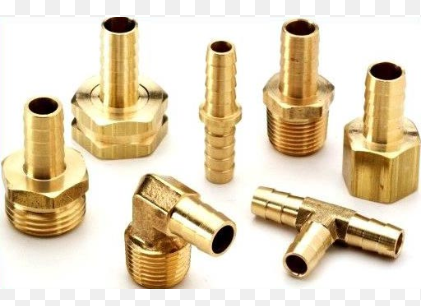A set of copper-zinc alloys that may sometimes include additional metals like lead are known as brass. Irrespective of the types and composition, brass is strong, tough, corrosion-resistant, conductive, and machinable. Brass is mostly used as alloys due to its ease of production. For centuries, it has been the metal choice for various musical instruments. Moreover, it’s an ideal alloy for the transport of water through fittings and pipes. Additionally, it’s also used in pump parts and marine engines. It should not be a surprise to know that one of the first commercial uses of brass was for naval ships.
Non-magnetic nature makes it popular and a mostly used metal. Electrical terminals, munitions, and clock and watch components require metal that’s not affected by magnetism. And brass becomes the choice of every industry due to its non-magnetic nature. While understanding a complete list of all the applications where brass products manufacturers use this alloy would be a colossal task, however, you can get an idea of the breadth of industries and the types of products in which brass is used by categorizing and summarizing some end-uses based on the grade of brass used.
Free Cutting Brass
Also called as “free cutting brass,” Alloy C-360 brass is alloyed with copper, zinc, and lead. This brass is very easy to machine and offers the same corrosion resistance and toughness as other forms of brass. Some applications of free cutting brass include nuts, bolts, threaded parts; terminals; jets; taps; injectors; valve bodies; balance weights and pipe or water fittings.
Gilding Metal (Red Brass)
A form of brass that is made up of 95% copper and 5% zinc is red brass or gilding-metal. A soft brass alloy, gilding metal can be easily formed into desired shapes by a hammer. Its rare deep bronze color and its ease of use make red brass an ideal choice for craft-related projects. Brass products manufacturers generally use gliding metal for artillery shells. Some other uses include architectural fascias; grillwork; jewelry; ornamental trim; badges; door handles; marine hardware; primer caps and pens, pencil and lipstick tubes.
Engraving Brass
Alloys that contain either 1% or 2% lead are known as Alloy C35600 or C37000, or engraving brass. Its name, not surprising, originates from its usage in the creation of engraved nameplates and plaques. Engraving brass may also be used for: appliance rim; clock components; builder’s hardware and gear meters.
Arsenical Brass
Alloys that contain about .03% arsenic to improve corrosion resistance in water are Arsenical brass (C26000, C26130 or 70/30 brass). Arsenical brass, like other forms of brass, is bright yellow, strong, and easy to machine. Brass products manufacturers generally use this in plumbing. Other uses include heat exchangers; drawn and spun containers; radiator cores, rubes, and tanks; electrical terminals; plugs and lamp fittings; locks and cartridge casings.
High Tensile Brass
High tensile brass is a mainly strong alloy which contains a minor percentage of manganese. Due to its strength and non-corrosive qualities, high tensile brass is commonly used for products that undergo a good deal of stress. Some examples are: Marine Engines; Hydraulic Equipment Fittings; Locomotive Axle Boxes; Pump Casting; Heavy Rolling Mill Housing Nuts; Heavy Load Wheels; Valve Guides; Bushes Bearings; Swash Plates and Battery Clamps.
This was a brief description of detailing about the industries where brass products manufacturers use this alloy.

